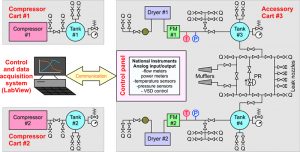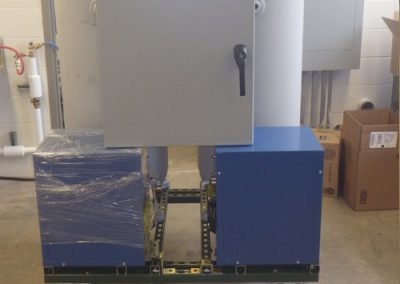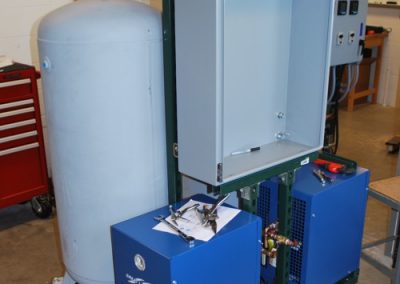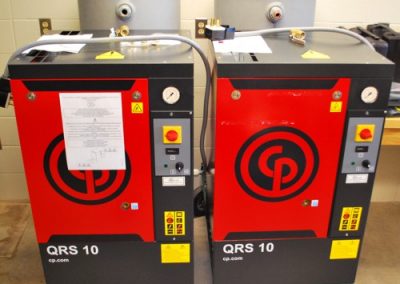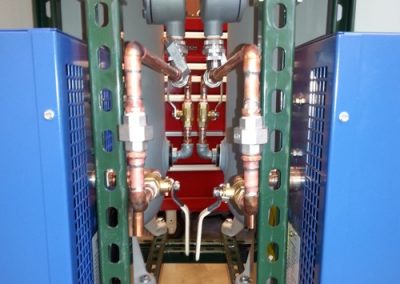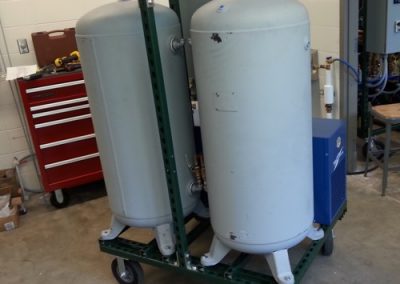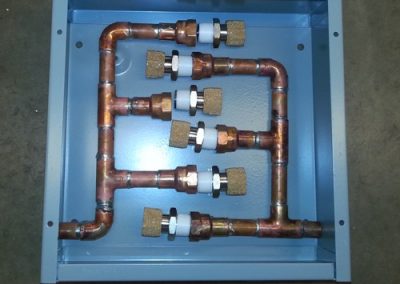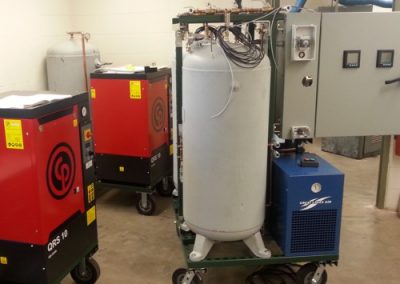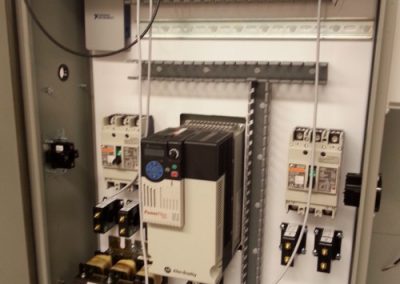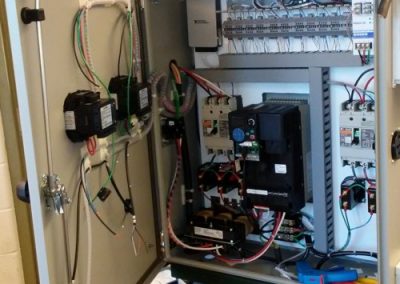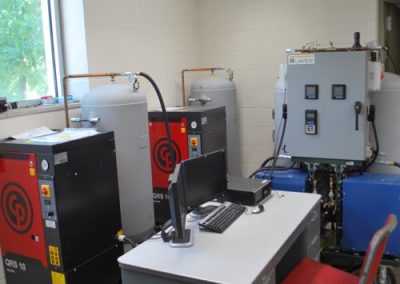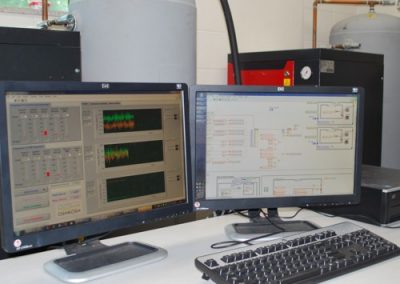Contact Us
UW Oshkosh
Department of Engineering & Engineering Technology
(920) 424-1547
engtech@uwosh.edu
Fax: (920) 424-1581
Compressed Air
Compressed air systems are widely used in industrial sector, regardless type of production: automotive, food, plastic, chemical, paper, etc. Typically compressed air is used for control purposes in any type of hand tools, actuators, valves, siłowniki, etc. In addition to that, compressed air can power various types of pumps and motors installed in highly explosive areas. This description indicates clearly, that compressed air is a form of energy converted from electricity. Combination of both terms: air and electricity can suggest, that compressed air is relatively non-expensive form of energy. However such conclusion is misleading. Efficiency of compressed air systems is relatively low (~10%). For better understanding, such comparison can be drafted: to power 1 kW compressed air motor for mixing paddle the compressed air system needs to be powered by ~10 kW compressors.
Wide application of mentioned above systems in combination with its low efficiency gave an inspiration for design and construction of the Compressed Air System in the UW Oshkosh Teaching and Energy Research Industrial Lab (TERIL).
EXPERIMENTAL DESIGN
Compressed Air System designed and constructed in the Teaching and Energy Research Industrial Lab (TERIL) has two sets of 10 HP compressors, air dryers and four receiver tanks (Fig 1). The system is organized as a set of three individual carts: two Compressor Carts (#1 and #2) with air compressor and receiver tank. The third Accessory Cart #3 has two receiver tanks, control panel, and hardware analogical to full scale industrial installations: flow rate meters (FM#1 and FM #2), pressure sensors (P), temperature sensors (T), and pressure regulator (PR). All carts can be organized in various configurations by quick connecting couplers (Q) and set of hoses of various diameters. Both compressors are Load/Un-Load types, but to increase demonstration capabilities of combined compressors operation, one of them can be connected through the variable speed drive, additionally controlled by the pressure sensor. Power consumption in both compressors, as main energy users, is measured by additional, individual power meters. The system operation can be monitored on the remote computer with individually developed (LabView) software allowing advanced data acquisition.
Air compressed in the TERIL Compressed Air System can be used for auxiliary purposes, for example as a back-up for the UW Oshkosh campus building, or air supply for experimental furnace. The design allows also for autonomous system operation, where air can be discharged in mufflers, integrated with the Accessory Cart #3. Of course, the last option does not have practical implementations in real life, but is very convenient for teaching and demonstration purposes in the TERIL.
INTEGRATION WITH THE ENGINEERING TECHNOLOGY PROGRAM
The most valuable aspect of exercises supported by the TERIL is combination of theoretical college knowledge and real industrial applications. Understanding of presented TERIL Compressed Air System concept guaranties, that former students will apply their knowledge in any air system in real world, they will have to work with.
Design and construction of the Compressed Air System provided great opportunities for students to exercise practical and hands-on skills in their individual studies.
Already constructed system allows for various types of individual measurements like power consumption (stationary meter and portable power logger), or temperature and pressure (stationary sensors and portable loggers). In addition to that students are exposed on deeper analyses of collected data with proper understanding of the system operation. Four exercises on a TERIL Compressed Air System are a part of the course Measurements, Control and Data Acquisition (ENGR 342), offered for both Mechanical and Electrical Engineering Technology students:
- Pressure, temperature and volume measurements in gas flows. Application of ideal gas equation.
- Power measurements, influence of pressure on power consumption in compressed air systems. Energy effects of air leaks.
- Performance comparison of Load/Un-load and Variable Speed Drive (VSD) controlled compressors. Comparison of energy effects in compressed air and electricity driven motors.
- Performance evaluation of two cooperating compressors for a common system. Heat recovery possibility. Data mining for evaluation of compressed air systems.
The experimental setup provides also wider opportunities for the future individual studies oriented control, operation and analysis of compressed air systems.

Department of Engineering and Engineering Technology

